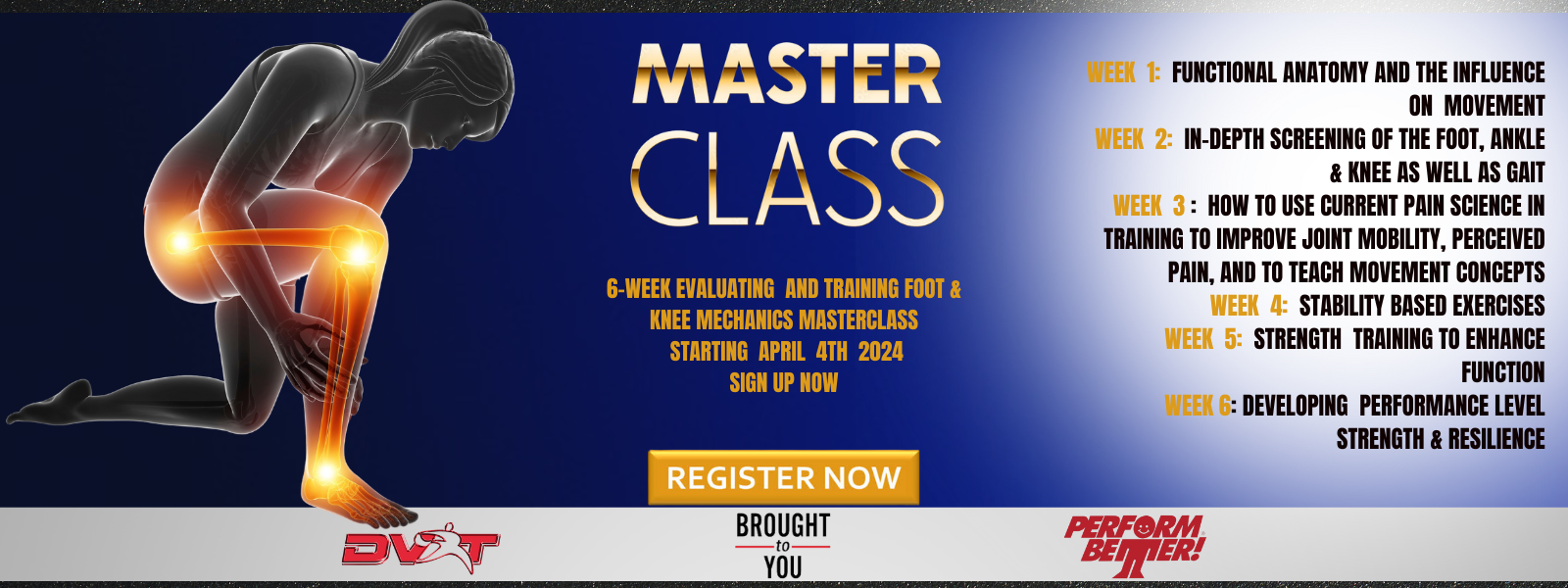Squatting Without Knee Pain
2024-03-14

Jessica Bento, Physical Therapist (Creator DVRT Restoration Certification, DVRT Rx Shoulder, Knees, Pelvic Control, & Gait Courses)

Often times as a physical therapist I hear patients say, “ I can’t squat, my knees hurt too bad.” Or I get fitness professions saying they often have a hard time getting their clients to squat without pain as well. Its a rather common issue I hear about but it’s actually rather simple to get people to squat pain free. Lets dive into it a bit more.
I don’t think there is any argument that squats are a great exercise. There are definitely those, though, that confuse the movement with the exercise. What does that mean?

Many people mistaken the exercises for movement patterns like you see above.
Squats are one of our seven foundational human movement patterns. What we actually look for in the movement will help clear up why certain squats are better than others. Ideally, we are looking for the torso to be as upright as possible during the squat. No, not everyone will have the same ability to get the same upright torso, but we should see people have a pretty upright position.

The differences between movement patterns and exercises may seem subtle but they are very different.
When we look at a movement, we always aim to build the most efficient movements as possible. In the case of the squat, that means aiming to produce great ankle, knee, and hip mobility. Why is this so important? Whether we are aiming to achieve greater injury resiliency, especially in the low back, or improved performance (through greater ability to use triple extension that relies on the ankle, knee, and hip working together), a more vertical torso position is ideal.

Let’s address some squat variations that encourage more forward lean in the movement. Many will do so to hit the posterior chain to a higher degree. Using a squat with an increase lean will accomplish that goal, but at a cost. We will see significantly higher loads in the SI joint and lumbar spine. That is a pretty big trade off and we have the hip hinge to use movements to tap into the glute and hamstring development. Additionally, there is research showing that our depth of squat (meaning the deeper we go) will actually work the glutes and hamstrings to a great degree.
It All Starts From The Ground Up
For years professionals have been told to coach the squat with either “sitting back” or “push the knees forward”. In either case, we are missing the actual starting point which is the feet. It is important to remember that our feet are the starting point for anything where we are standing as they are where our body interacts with the ground. Teaching how to properly use the feet will fix many of the issues we often see in improper squats.
View this post on Instagram
Most coaches forget that the feet drive the knees and hips. In order to help avoid the knee valgus we actually have to start with how we cue the feet. Not only will using the feet correctly help the knees from collapsing, but the feet connect to the hips and is how we activate the entire kinetic chain of the lower body.
Core Is King
Squats are mostly seen as a lower body exercise, but as we look at the entire movement, we can’t deny the core plays a major role. Since core instability can cause issues with the hips, being able to connect the chains of muscles that work with the pelvis helps us develop a stable foundation in which to move. When we have greater stability we achieve greater mobility in many areas of the body that classically seem problematic.
We know bracing in the plank helps us learn whole body stability. So, the question becomes, “how come we don’t use these same concepts in the squat?” The PNF concept of “proximal stability for distal mobility” is often used in a wide variety of exercises, but rarely applied to drills like squats.

Teaching clients how to properly brace and connect the chains of the body can INSTANTLY transform one’s squat. Alleviating discomfort in the performance of the movement as well as increasing how strong and stable we feel while performing the squat. The key is to use functional fitness tools to help people learn how to use their bodies properly in order to experience the power of these concepts.
Want to learn more how to apply these strategies to foot and knee pain? Don’t miss our upcoming Foot & Knee Masterclass HERE and right now, this week only, you can save 30% on our other online certifications, courses (the masterclass is not included), and Ultimate Sandbag equipment with code “spring” HERE
View this post on Instagram
© 2025 Ultimate Sandbag Training. Site by Jennifer Web Design.






